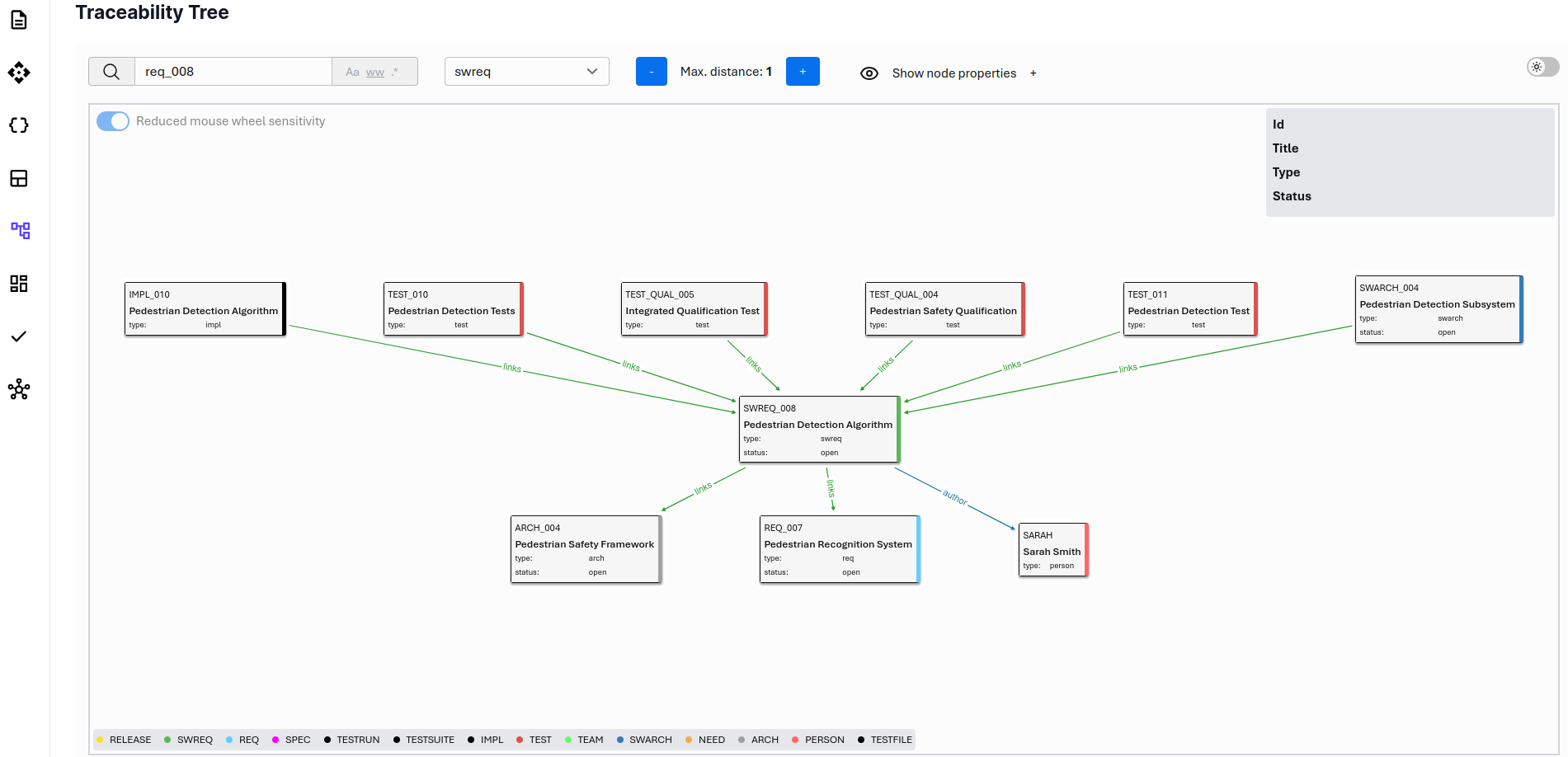Dynamic Analysis¶
ubTrace provides the powerful advantage of dynamic analysis, enabling on-the-fly answers to traceability-related questions.
While the standard Sphinx/sphinx-Needs workflow requires code changes,
creating a git commit, and going through a review process for
updates to any Sphinx-Needs-related analysis page, ubTrace allows users
to filter data and generate views without any code modifications.
This makes ubTrace ideal for quick answers and easy usability, even for non-technical users.
Traceability Tree¶
The ubTrace traceability feature is the best choice for analyzing the connections between different Sphinx-Needs objects in a documentation.

Key features include:
Filtering: Easily filter objects by text values and types.
Interactive Tree: Zooming and moving the tree are supported for better visualization.
Color Coding: All objects and their connections are color-coded based on their type.
Customizable Data: Additional data, such as
statusandtype, can be displayed alongside default values likeIDandtitle.Configurable Depth: The number of connected objects shown can be adjusted using the
Max. distancesetting.
The Traceability tree displays data for the currently selected project and version. If Multi-Project Support is activated, the project selection at the top of the page can be used to switch the data context.
Technical Details¶
Querying and representation are calculated in real time, ensuring fast execution—typically under a second, even for larger projects.
To guarantee fast query execution, the ubTrace Builder creates a standalone graph database during the documentation build process. This database is accessible to all ubTrace frontend features.